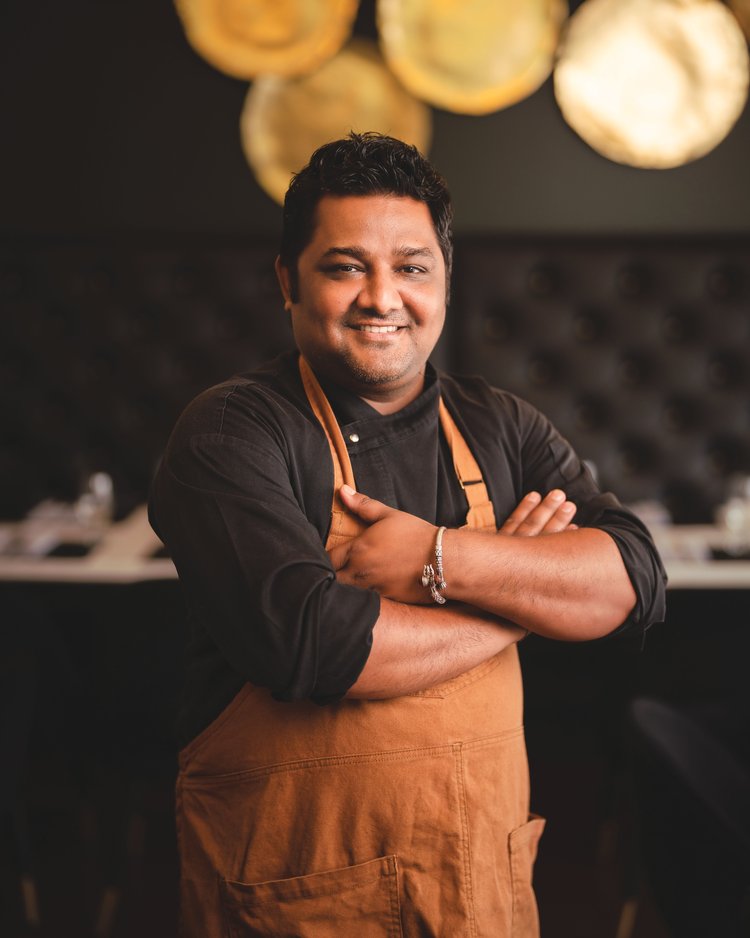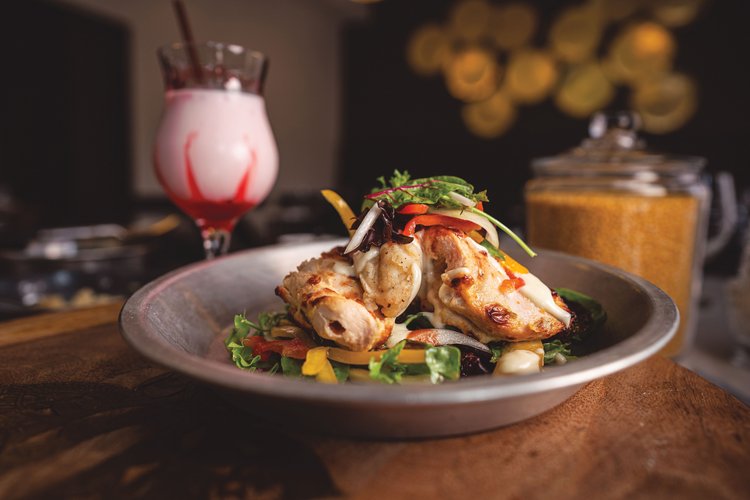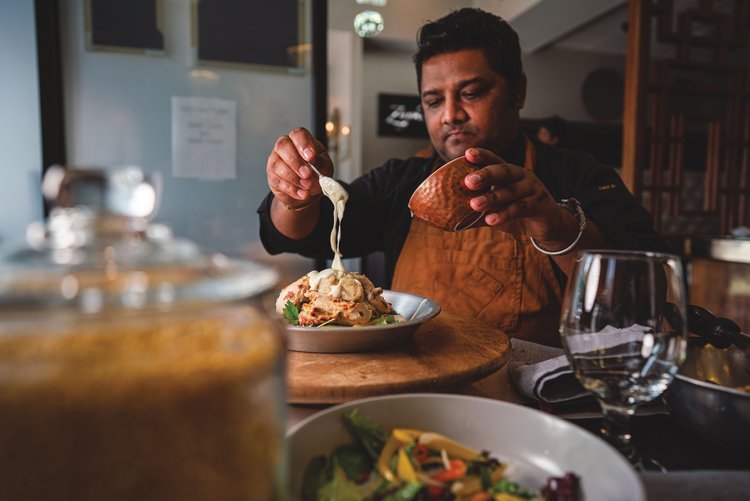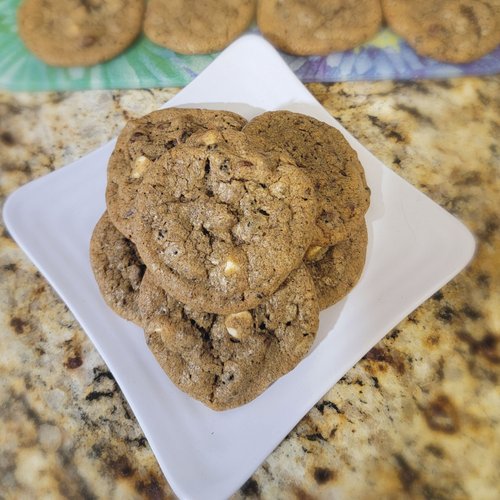Article:
A Focus on Authentic Flavors
By Katie Jansen Photos by MASH Photography
Keshav Kalia sees flavor as a pathway to unlock memories and celebrate culture. It’s no wonder, then, that the restaurant he owns and manages—Zayka Indian Cuisine—is named after the Urdu word for “flavor.”
The flavors served up at Zayka Indian Cuisine are the restaurant’s differentiator in a market that has several options for Indian food. “There are many Indian restaurants around here, but most hire chefs locally and train them,” he says. “It’s really difficult to train someone to recreate the exact flavors from India, which is why we chose to bring in our chef from India.”
Kalia’s journey with Zayka Indian Cuisine began in 2014. He interviewed to become the restaurant’s manager while he was still living in Singapore and managing three restaurants and two banquet halls. Just a year after moving to the U.S. to pursue the opportunity, he had the chance to purchase the business from the previous owners and became the restaurant’s sole proprietor.
Initially, Zayka Indian Cuisine was offering many of the same dishes as its competitors. Kalia observed that most of the customers were American. But now that Kalia was at the helm, he was ready to shake things up—and was on the lookout for gaps in the market that he could fill.
Cuisine From Across India
One of the first orders of business was finding a chef who could deliver something truly special. Kalia had a vast network from his time at university, where he pursued a master’s of science in catering and hospitality and an master’s of business administration in hotel management. He recruited his classmate and friend, Sanjeev Kumar, who had since become an internationally acclaimed celebrity chef, making him eligible for a special visa to work in the U.S.
The pandemic delayed Kumar’s arrival in the U.S., but once he settled in and started cooking, Kalia noticed a marked difference. Now, the restaurant attracts customers of both American and Indian descent, all of whom want a taste of Kumar’s flavors.
In addition to tandoor dishes and kebabs, Kumar’s specialty is dal Bukhara, a lentil-based dish cooked overnight and sauteed with tomatoes, ginger and garlic. He is from the region where the dish was invented and even worked at the restaurant that is well known for the delicacy: the ITC Maurya in New Delhi.
But Kumar’s talents extend far beyond his hometown specialties—he can cook not only traditional Indian naan, but also hundreds of breads from other regions and countries, such as Pakistan and Afghanistan.
This breadth of experience has served Zayka Indian Cuisine well. Although the restaurant’s menu focuses on Punjab food, or food from Northern India, Kumar has experience with traditional dishes from all across India. With 28 states and eight union territories, the country boasts a wide array of foods associated with all of the different cultures. These traditional cultural foods have become the backbone of the catering arm of the company.
“When there’s a family event like a big wedding, people miss their traditional state food,” Kalia says. They need the food that they would normally get if they were back home in India. We try to accommodate them, and we are always willing to go the extra mile for our customers to give them a similar experience here by providing their state food from their home.”
Expanding Options
The catering arm of the business has become so popular that it has expanded beyond North Carolina and now covers many surrounding states, including West Virginia, Georgia and South Carolina. In the future, Kalia plans to open a commercial kitchen that can help fulfill these large orders and cater to customers’ every need.
Kalia’s plans for the future don’t end with catering. Just as he noticed a lack of Indian chefs in the U.S. years ago, Kalia has identified another gap in the market—which he plans on bridging with a new restaurant concept.
Street food is wildly popular in India, but Kalia says few restaurants are making Indian street food in the U.S. In response, Kalia recently opened Chaat Mandi in Morrisville. The restaurant is named after chaat, a popular Indian snack, and “mandi,” the Hindi word for “market.” Chaat Mandi has the same focus on quality that Zayka Indian Cuisine does but with a more casual atmosphere, Kalia says. The concept also shifts away from a traditional restaurant by offering light breakfast and late-night snacks.
Kalia has big plans for the Zayka Indian Cuisine empire. He has toyed with the idea of a third concept, perhaps fusing Indian cuisine with another culture’s food, such as Mexican or American. Regardless, diners can be sure that he is always assessing the market to see what’s missing—and planning his next steps as he thinks about the new flavors he can bring to Raleigh. Explore the menu at zaykaraleigh.com.


CHICKEN MALAI KEBAB
Ingredients
1 pound of boneless chicken, cut into 2-inch cubes
To be ground into paste:
100 grams of ginger
8 garlic cloves
2 green chiles
For the marination:
2 tablespoons of fresh cream
2 tablespoons of Britannia Cheese Spread – Asli Pepper
2 tablespoons of hung curd (Greek yogurt)
1/2 teaspoon of cardamom (Elaichi) pods/seeds
1 teaspoon of garam masala powder
1/2 teaspoon of nutmeg powder
1/4 teaspoon of white pepper powder
1 tablespoon of lemon juice
1 tablespoon of corn flour
1 teaspoon of kasuri methi (dried fenugreek leaves)
Salt, to taste
Butter (salted), for basting
Directions
Prep all the ingredients for the marinade. Wash and pat the chicken dry, then set it aside.
Make a paste with the ginger, garlic and green chiles. You could optionally add 2 tablespoons of water to blend into a paste.
To marinate the chicken, in a large mixing bowl, combine the fresh cream, hung curd, cream cheese, salt, ginger, garlic, green chile paste, garam masala powder, cardamom powder, nutmeg powder, white pepper powder, lemon juice, corn flour and kasuri methi. Mix well.
Add in the boneless chicken cubes and mix well until the chicken is evenly coated. Cover the bowl and set aside the kebabs to marinate for a minimum of three hours. You can also refrigerate them for a longer time.
To bake them, preheat the oven to 200 degrees celsius for 10 minutes. Line a baking tray with aluminum foil then grease it generously with the oil, or you can cook in a tandoor on a slow flame.
Arrange the kebabs on skewers, place them on the baking tray and bake them for 10 minutes.
After 10 minutes, baste the kebabs with butter and the remaining marinade. Flip the kebabs and bake them for another 10–15 minutes or until done.
Remove the kebabs from the oven when they are almost done. If you have a gas stove, turn on the flame of it and hold the skewers over the flame to achieve a slightly roasted and smoked flavor and color.
Serve the hot kebabs as an appetizer or entree.


